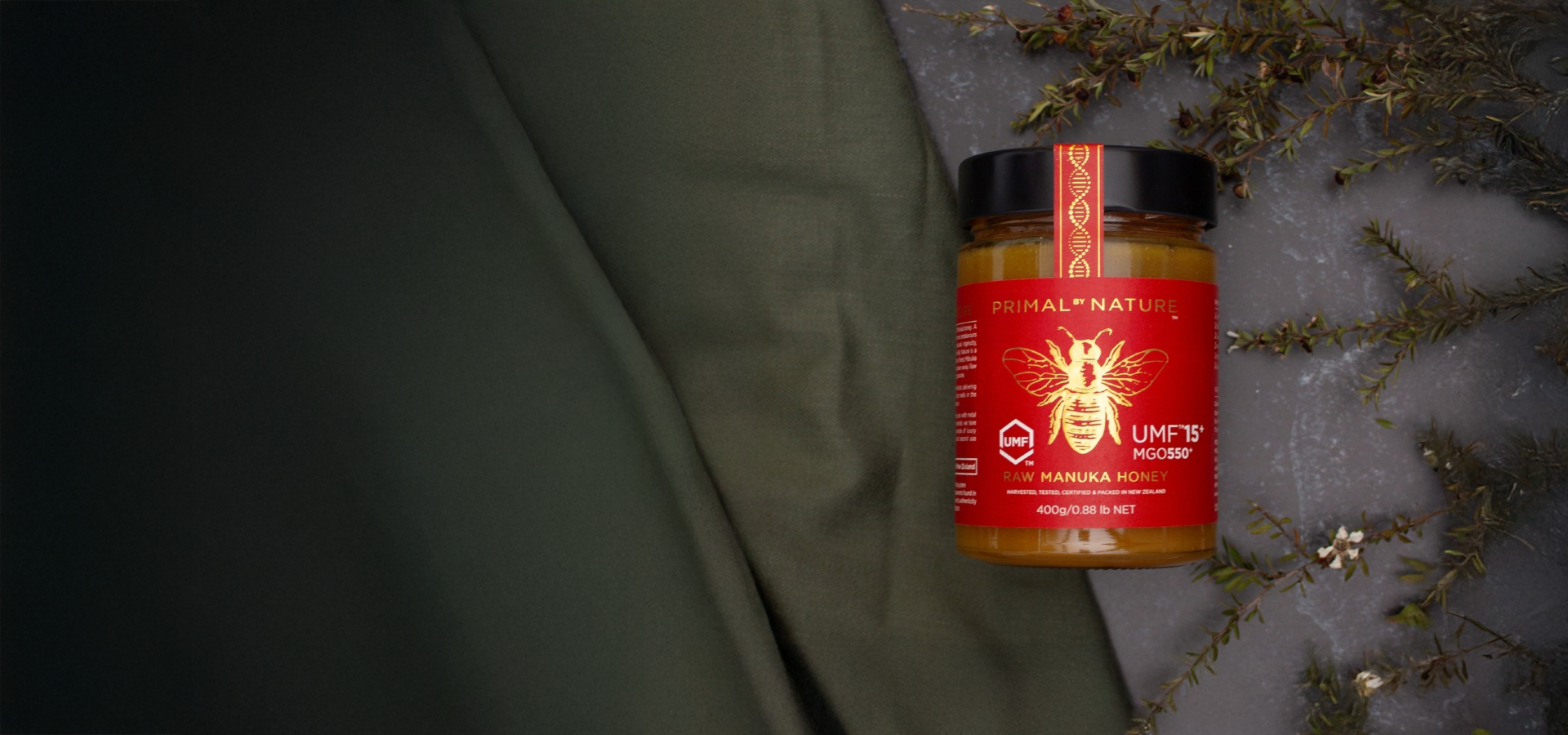From bustling urban centres to serene rural landscapes, this golden nectar has found its way into the hearts and homes of health-conscious individuals across the globe. A remarkable substance that’s revered for its unique properties and rich flavour, Mānuka honey is intrinsically linked to the pristine environment from which it originates from.
The honey is produced from the nectar of ‘Leptospermum scoparium’, commonly known as the Mānuka tree; an indigenous plant species to New Zealand that thrives within its pristine, well-protected natural environments. From windswept coastal cliffs, to dense native forests and rugged hill country, native honey bees will seek out the Mānuka tree in order to produce a form of honey that is far from ordinary.
Why Is Mānuka Honey So Special?
From bustling urban centres to serene rural landscapes, this golden nectar has found its way into the hearts and homes of health-conscious individuals across the globe. A remarkable substance that’s revered for its unique properties and rich flavour, Mānuka honey is intrinsically linked to the pristine environment from which it originates from.
The honey is produced from the nectar of ‘Leptospermum scoparium’, commonly known as the Mānuka tree; an indigenous plant species to New Zealand that thrives within its pristine, well-protected natural environments. From windswept coastal cliffs, to dense native forests and rugged hill country, native honey bees will seek out the Mānuka tree in order to produce a form of honey that is far from ordinary.
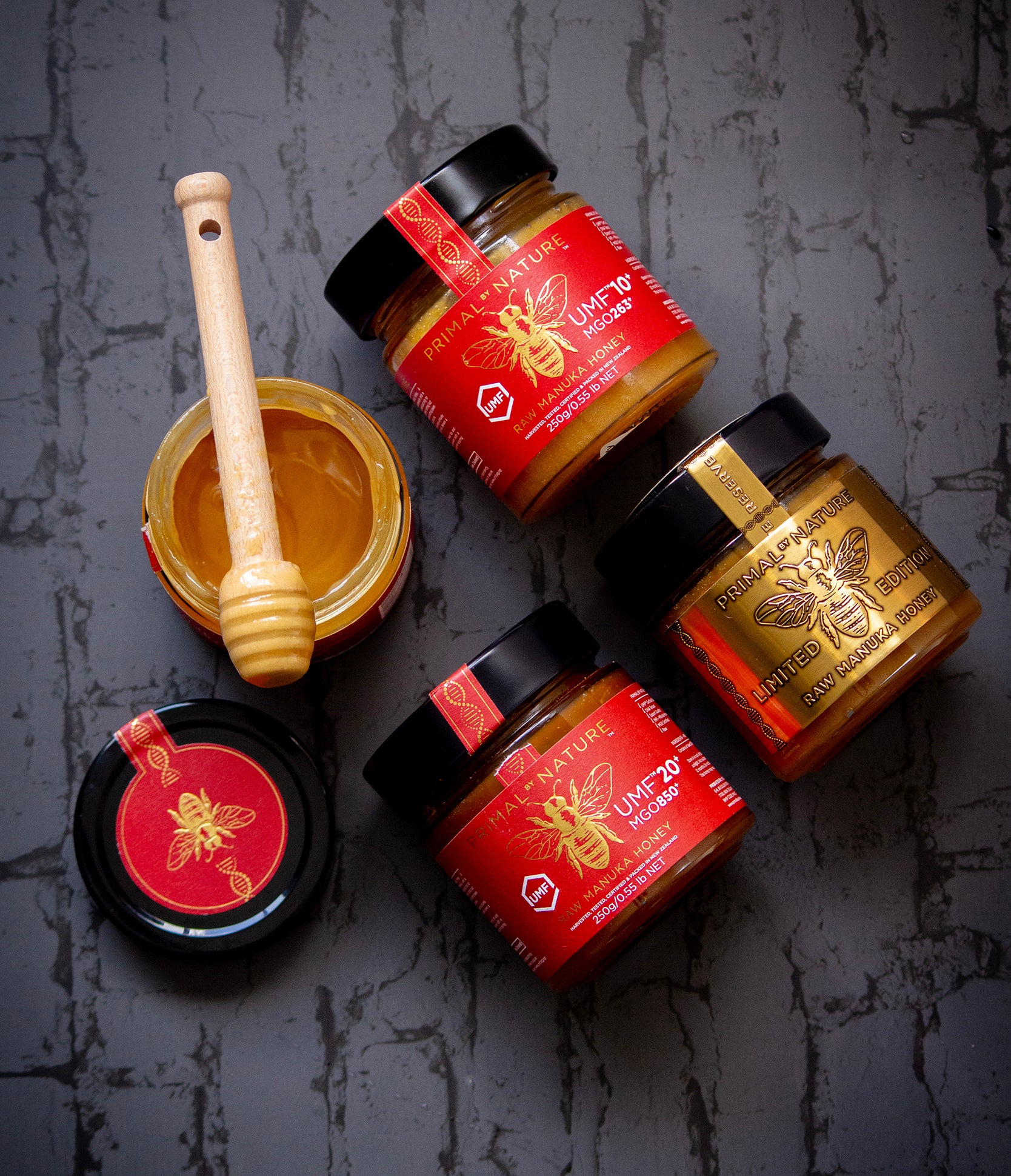
Why Is Mānuka Honey So Special?
Mānuka honey is unlike any other honey product on the market.
At its heart, Mānuka honey delivers exceptional antibacterial properties. While most honey products offer subtle levels of antibacterial qualities, the properties of Mānuka honey take it to another level, largely thanks to its high concentration of a unique compound called “Methylglyoxal”, or MGO.
MGO is found in high quantities within Mānuka honey, when compared to other honey types, giving it the capacity to tackle particular forms of bacteria. This robust quality is a key reason why Mānuka honey has garnered such attention in the realm of natural remedies.
The use of Mānuka honey dates back the days of the indigenous Māori, who used the Mānuka tree’s properties to reduce fevers and treat stomach and urinary problems. The tree was considered a gift from the Gods, and the honey produced from its nectar was believed to carry the same divine properties.
Ever since the age of modern science identified the properties of Mānuka honey, studies have indicated that the product could, indeed, be applied to support the body in a number of ways.
Immunity Boost - Its unique compounds can help bolster the body’s natural defenses.
Gut Support - The honey may contribute to a balanced and healthy digestive system.
Wound Healing & Skincare - Studies have suggested its properties can aid in the healing of minor wounds, and promote healthy skin.
How to Choose the Best Manuka Honey: Understanding UMF & MGO
The grades that you find on jars of Mānuka Honey are essential for knowing exactly what you’re getting in each product. There are two main grading systems:
- MGO (methylglyoxal)
- UMF™ (unique Mānuka factor)
Methylglyoxal is an organic compound that naturally forms in Mānuka honey. It was first discovered in the natural product back in 1981; scientists realised it was the key ingredient that gave Mānuka such unique properties.
Research has since suggested there are potential links between MGO concentrations and antibacterial properties within Mānuka honey. In 2011, a study concluded that MGO did, indeed, play a role in preventing certain bacterial growth. In other words, the MGO grade measures the level of antibacterial benefits that the honey provides.
On the other hand, UMF™ is a more comprehensive certification that takes into account more factors than the other grading systems will. It’s the only system that independently verifies all the elements that make New Zealand Mānuka honey unique.
While many people focus only on methylglyoxal (MGO), UMF™ is a more comprehensive assessment of the product. There are four key markers that determine the UMF™ grade:As UMF™ is the only standard that independently tests the quality of New Zealand Mānuka honey, it reassures consumers worldwide of the strength and purity of each jar they buy.

Leptosperin
Leptosperin determines the authenticity of Mānuka honey. A unique compound found solely within the nectar of the Mānuka flower, it’s the DNA marker that validates genuine honey.

Methylglyoxal (MGO)
Methylglyoxal determines the potency of Mānuka honey - it’s these levels that are often sufficient for many Mānuka honey buyers to feel confident in their purchase.

Dihydroxyacetone (DHA)
Dihydroxyacetone determines the shelf-life of Mānuka honey. This biochemical is the precursor to MGO and will gradually convert to MGO over time. The higher the concentration of DHA, the longer the life of the MGO will be maintained.

Hydroxymethylfurfural (HMF)
Hydroxymethylfurfural determines the freshness of Mānuka honey. This heat-sensitive compound is an essential factor in determining the quality of Mānuka honey, as it assures the customer that the honey hasn't been stored for too long or processed.
Nearly every aspect that comprises Mānuka honey can be measured using this system, which is why many consider UMF™ to be the most solid and robust method for grading, certifying, and validating monofloral Mānuka honey. Each Mānuka honey product with the UMF™ trademark must pass stringent quality, grading, and rating tests from the Unique Mānuka Factor Honey Association (UMFHA).
As UMF™ is the only standard that independently tests the quality of New Zealand Mānuka honey, it reassures consumers worldwide of the strength and purity of each jar they buy.
How to Choose the Best Manuka Honey: Understanding UMF & MGO
The grades that you find on jars of Mānuka Honey are essential for knowing exactly what you’re getting in each product. There are two main grading systems:
- MGO (methylglyoxal)
- UMF™ (unique Mānuka factor)
Methylglyoxal is an organic compound that naturally forms in Mānuka honey. It was first discovered in the natural product back in 1981; scientists realised it was the key ingredient that gave Mānuka such unique properties.
Research has since suggested there are potential links between MGO concentrations and antibacterial properties within Mānuka honey. In 2011, a study concluded that MGO did, indeed, play a role in preventing certain bacterial growth. In other words, the MGO grade measures the level of antibacterial benefits that the honey provides.
On the other hand, UMF™ is a more comprehensive certification that takes into account more factors than the other grading systems will. It’s the only system that independently verifies all the elements that make New Zealand Mānuka honey unique.
While many people focus only on methylglyoxal (MGO), UMF™ is a more comprehensive assessment of the product. There are four key markers that determine the UMF™ grade:As UMF™ is the only standard that independently tests the quality of New Zealand Mānuka honey, it reassures consumers worldwide of the strength and purity of each jar they buy.
How to Identify Genuine New Zealand Manuka Honey
The key is always in the labelling of the product. In order for a Mānuka honey product to register a particular MGO or UMF grade, it must pass a series of stringent quality, grading and rating tests determined by the UMFHA. If your product specifies the grade, you’re off to a good start.
Also note that the MGO and UMF grades should correlate. If you see a high MGO number, you should also see a corresponding UMF number. To clarify any ratings, visit this article.
Another key way of determining the authenticity of your Mānuka honey is by verifying its source. Real Mānuka honey comes from New Zealand, so look for “Product of New Zealand” on the label. There’s also lab testing, a vital step in the process of crafting the product.
You’ll want to purchase Mānuka honey from companies that use independent labs. These labs will test for things like Leptosperin, providing an unbiased assessment of the properties contained within the substance.
There are also slightly less definitive ways to verify your Mānuka honey is legitimate. The look and feel of the product should be consistent with a Mānuka product - genuine Mānuka honey has a rich, golden colour and a thick, creamy texture.
Finally, make sure to research the company you’re buying from. How long have they been around? What are their customers saying? Look for the brands that are transparent about their sourcing and testing. Read reviews, check their website and ensure they have a good reputation.
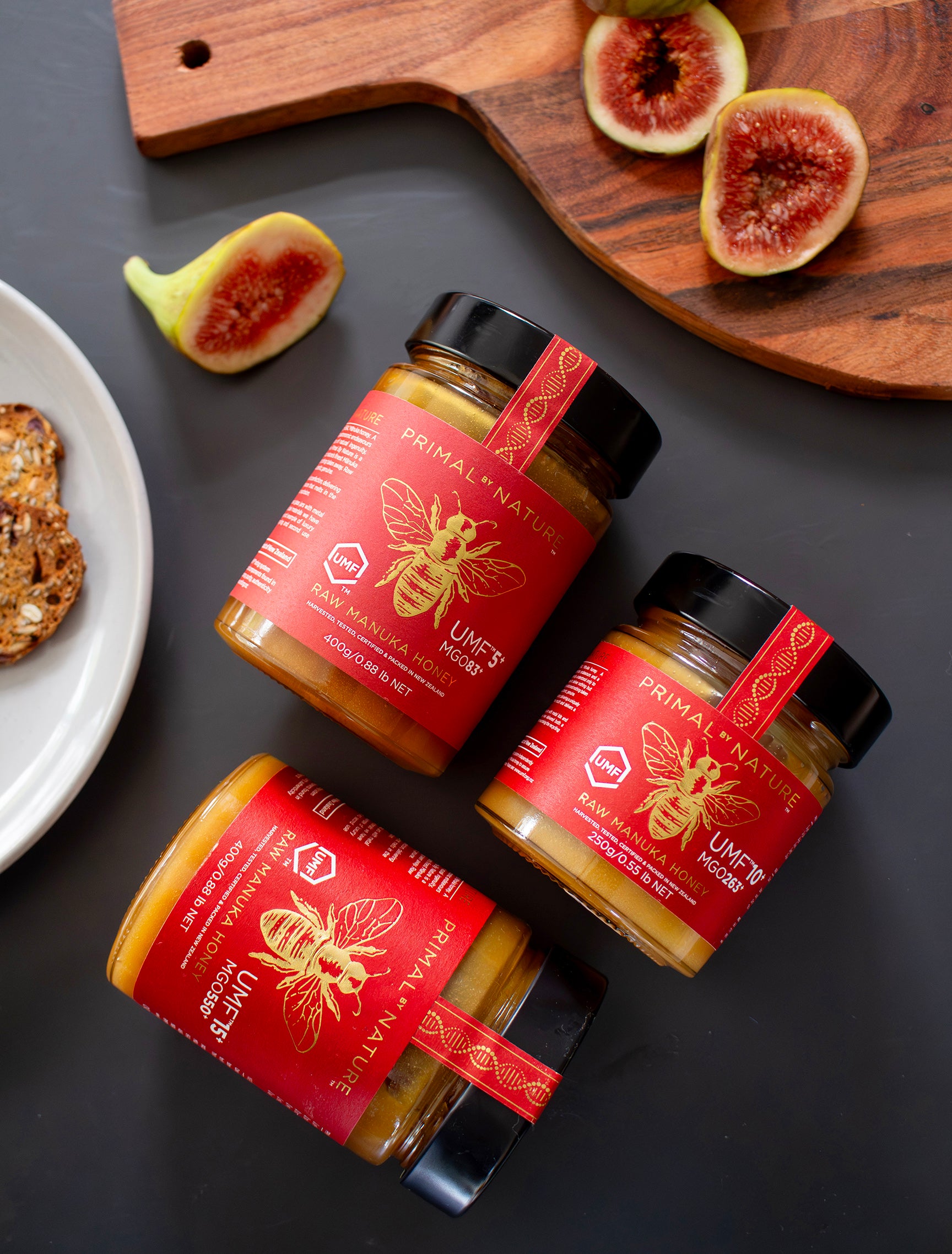
Best Ways to Use Mānuka Honey for Health & Wellness
One of the most revered traits of Mānuka honey is its versatility; it’s a product that can be applied for numerous purposes - from everyday routines to immune support. Depending on the grade of honey that you purchase, there’s a number of ways that Mānuka honey can contribute to meals, health and overall wellbeing.
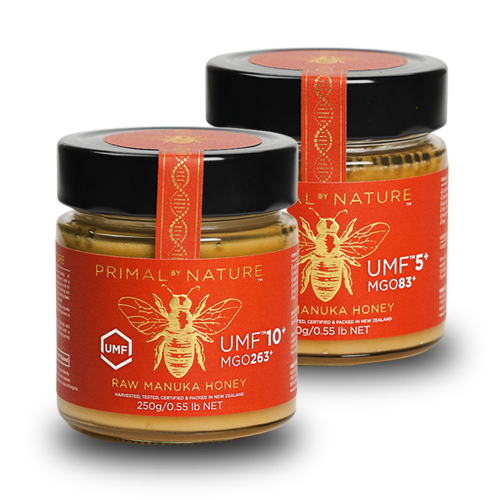
UMF 5+ & 10+
Perfect for daily wellness and general use, offering a gentle boost to support a healthier lifestyle. These grades are perfect for health-conscious consumers, and could be used as a natural sweetener, health snack or incorporated into a meal.
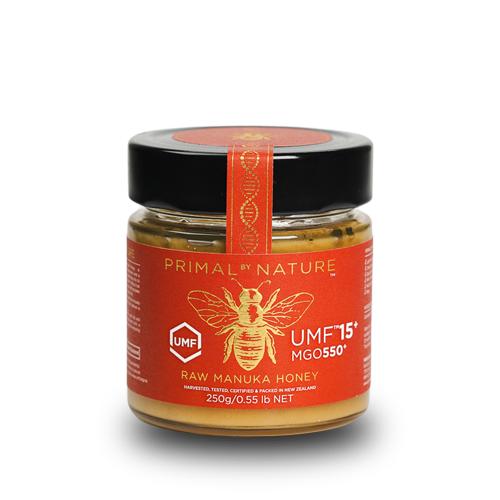
UMF 15+
Offers a good balance of potency and price. Studies have suggested that Mānuka products with this grade offer better support for immune systems and work well for minor injuries, like cuts and scrapes, when applied to the skin.
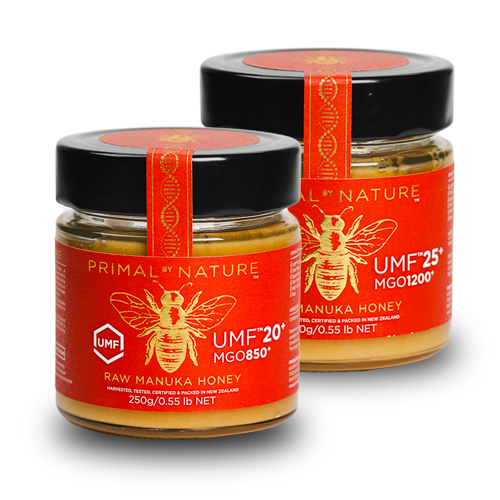
UMF 20+ & 25+
Positioned as a premium product, bringing a bit more impact for health support, perhaps to combat a cold or soothe a sore throat. In fact, there’s now a rising demand for therapeutic-grade Mānuka honey in the health and wellness industry. These grades are ideal for this.
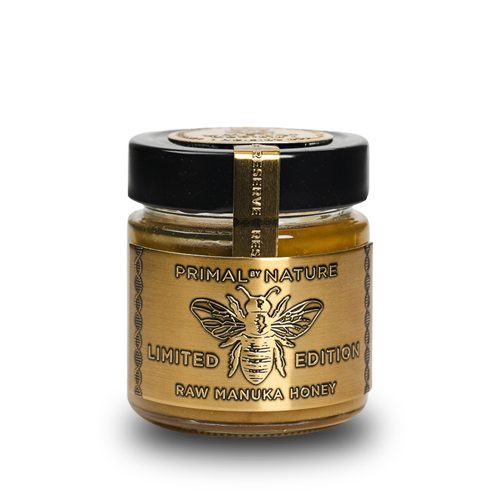
UMF 32+
More than just honey, it’s a symbol of luxury and exclusivity, designed to captivate premium customers who demand the very best.
Shop Premium, 100% Authentic Mānuka Honey
The hallmark of true Mānuka honey lies within its unique composition, a symphony of natural compounds that sets it apart.
Primal by Nature proudly bears the UMF™ certification - a globally recognized symbol of genuine, high-grade Mānuka honey that was sourced exclusively from the pristine landscapes of New Zealand.
Awarded only to the finest Mānuka honey brands, the UMF™ rating assures you of exceptional purity, potency, and quality. It’s directly linked to the abundance of MGO (methylglyoxal), confirming the remarkable antibacterial properties that make Mānuka honey a true marvel of nature.
To guarantee such a product, we go above and beyond. Each batch undergoes rigorous testing, where our laboratories ensure what you experience is the purest expression of nature's golden gift.
Why?
Because with Primal by Nature, you're not just savoring honey. You're experiencing the legacy of New Zealand's pristine environment and the meticulous care of our dedicated beekeepers. Nothing added, nothing removed - just raw, unpasteurised honey of the highest standard.
Looking for the best New Zealand Mānuka Honey? Shop our premium, UMF-certified, high-potency honey and experience nature’s purest superfood.


